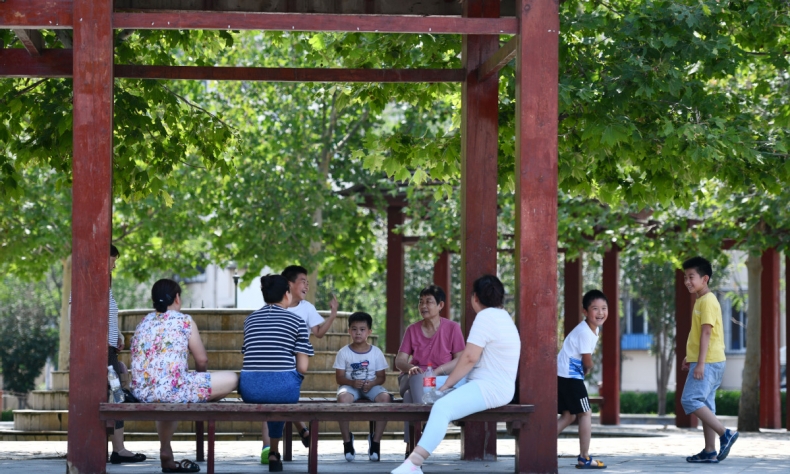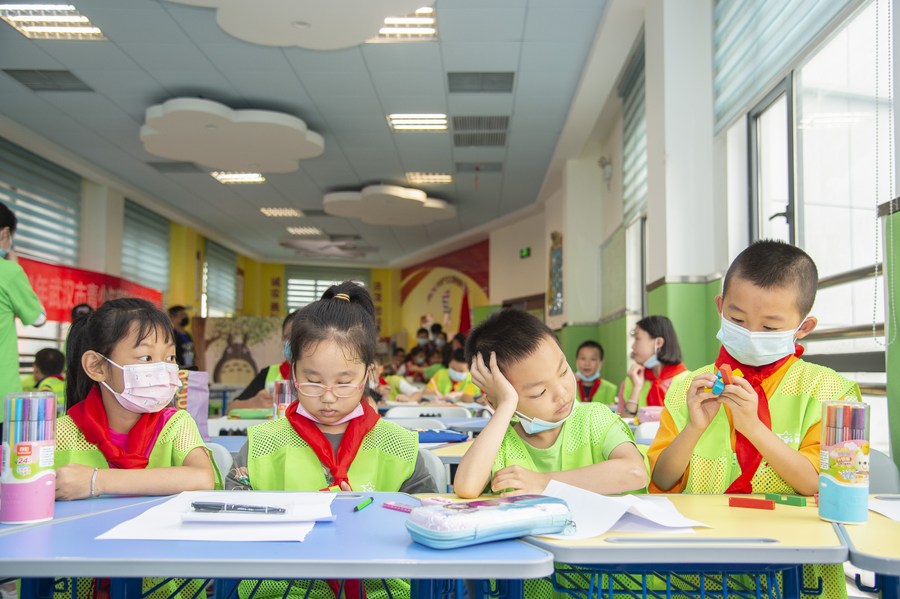The Consequences of China’s Negative Population Growth and Their Solutions

As a basic element of social and economic development, people serve as both consumers and producers and thus population affects economic growth through both the demand and supply sides.
China’s overall population fell by 850,000 year on year to 1.4118 billion in 2022, the National Bureau of Statistics (NBS) announced on January 17. This was the first time China registered negative population growth in 61 years.
About 9.56 million babies were born last year, 1.06 million fewer than the 2021 number. The birth rate stood at 6.77 births per 1,000 people in 2022, down from 7.52 in 2021. Both figures were the lowest since the founding of the People’s Republic of China in 1949.
By comparison, in 2021, the United States recorded 11.06 births per 1,000 people. The birth rate for the same year in India, poised to overtake China as the world’s most populous country, stood at 16.42.
Deaths surpassed births last year in China. The country logged its highest death rate since 1976—7.37 deaths per 1,000 people, up from 7.18 in the previous year, according to the NBS.
The causes
Jiang Quanbao, a professor with the Institute for Population and Development Studies at Xi’an Jiaotong University, one of the earliest population research institutes in China, said population changes are affected by the number of births, deaths and migration.
Without considering international migration, the negative population growth has been primarily caused by the declining birth rate and the increasing death rate.
Zhang Lilong, an associate professor at the School of Labor Economics of Capital University of Economics and Business, told news portal ThePaper.cn that the decline of the number of newborns is caused by multiple factors, including the later age at which people get married for the first time, the declining number of women of reproductive age (15-49), and an overall decreasing willingness to have children. The increase in the number of deaths is related to the rapid aging of the population.

Chen Wei, a professor at the Population Development Studies Center under Renmin University of China, said at a seminar hosted by the China Population Association on January 13 that according to the population censuses, the number of the country’s women of reproductive age had dropped from some 370 million in 2010 to 320 million in 2020.
Moreover, last year, China’s total fertility rate, or the average number of children born to each woman throughout her reproductive years, fell below the replacement level, or the level of fertility at which a population exactly replaces itself from one generation to the next. A replacement fertility rate of 2.1, as documented in China in 1992, is necessary to generate broad population stability. China’s 2022 fertility rate stood at just 1.08, and the momentum for negative population growth had been building up in the country for three decades.
The COVID-19 pandemic is another reason for the low fertility rate. Chen explained the pandemic has increased the uncertainties of people’s employment and income and impacted their health over the past three years, causing many to postpone, or altogether cancel, their plans to marry or have children.
Economic consequences
Population and economic growth are interrelated. Population growth boosts economic growth by enlarging the labor force and providing a large domestic market for producers. Moreover, population growth encourages competition, which induces technological advancement and innovation.
So the pressing question is: Will a country be able to achieve sustained economic growth during a period of negative population growth?
Zhang Xuying, a researcher with the China Population and Development Research Center (CPDRC), told Chinanews.com that China still has population advantages as the size of the newly added labor force will continue increasing every year until 2035. At the same time, the proportion of people who have received higher education has increased and the labor force is still relatively young. These advantages will combine with other production factors to form new growth points.

Liu Houlian, an associate researcher with the CPDRC said at the China Population Association seminar that based on international experiences, negative population growth can coexist with economic growth.
He said as a basic element of social and economic development, people serve as both consumers and producers and thus population affects economic growth through both the demand and supply sides.
He explained that on the demand side, negative population growth means there are fewer consumers, resulting in a declining demand for items to meet basic needs such as food and housing. However, as the consumption ability improves and the consumption structure changes, the overall consumption demand may not necessarily decrease.
On the supply side, although labor supply shrinks during negative population growth, the demand for labor also eases as production efficiency improves through the upgrading of the labor force quality and technological innovation.
He concluded that whereas in the short term, negative population growth will have a mild influence on the economy; in the long term, it will positively impact the economic system’s ability to withstand risks and therefore technological progress and production efficiency improvement are needed to offset the initial impact.
What to do?
Zhang Lilong suggested launching more policies to reduce the costs of childbirth and raising children, which may increase the birth rate and dampen the negative population growth.
China has adjusted its family planning policy several times in recent years, allowing all couples to have two children since 2016 and to have three children since May 2021, and rolling out a series of supportive measures to encourage childbirth. Facing an era of low fertility, Jinan, capital of Shandong Province, for instance, announced earlier this year that couples will receive a childcare subsidy of 600 yuan ($89) per month for a second or third child born after January 1, 2023 until the child turns 3.
To cope with the impact of negative population growth on the labor force, Shi Yi, an associate researcher with the CPDRC, suggested stepping up education reform to ensure the curriculum of vocational schools and universities befits the growing demand for industrial transformation and upgrading. “One big problem at present is that graduates educated in the current system can’t meet the labor market’s demand, which results in a waste of human resources,” he said.

Zhong Huiyong, an associate professor at the School of Banking and Finance under the Shanghai University of International Business and Economics, told ThePaper.cn that whether the existent labor force can be fully utilized is important. Better human resource allocation across the country can cushion the impact of the declining birth rate, he said.
“Technological advancement has increased production automation. As production efficiency improves, the demand for labor will drop, which will help ease the impact of a lower birth rate,” Zhong added.
In addition to the change in the scale of the population, structural changes, too, should receive more attention.
According to the NBS, the number of working-age people aged 16-59 was 875.56 million as of late 2022, accounting for 62 percent of the population and 0.5 percentage points lower, or 6.66 million fewer, than the number in 2021. In the meantime, the number of people aged 60 and above reached 280.04 million, accounting for 19.8 percent of the overall population and increasing by 12.68 million from the previous year.
Official estimates hold that China will become a severely aging society by 2035, with the number of people aged 60 and above reaching more than 30 percent of the overall population.
Zhang Lilong said managing the impact of the reduced working-age population on the labor market and transforming labor-intensive industries into capital and technology-intensive ones are now top priorities.
The rapid increase in the already staggering number of senior citizens poses new challenges to China’s social and economic development and requires the development of senior care industries as well as the fostering of an elderly-friendly society to cope with the problem.
 Facebook
Facebook
 Twitter
Twitter
 Linkedin
Linkedin
 Google +
Google +










